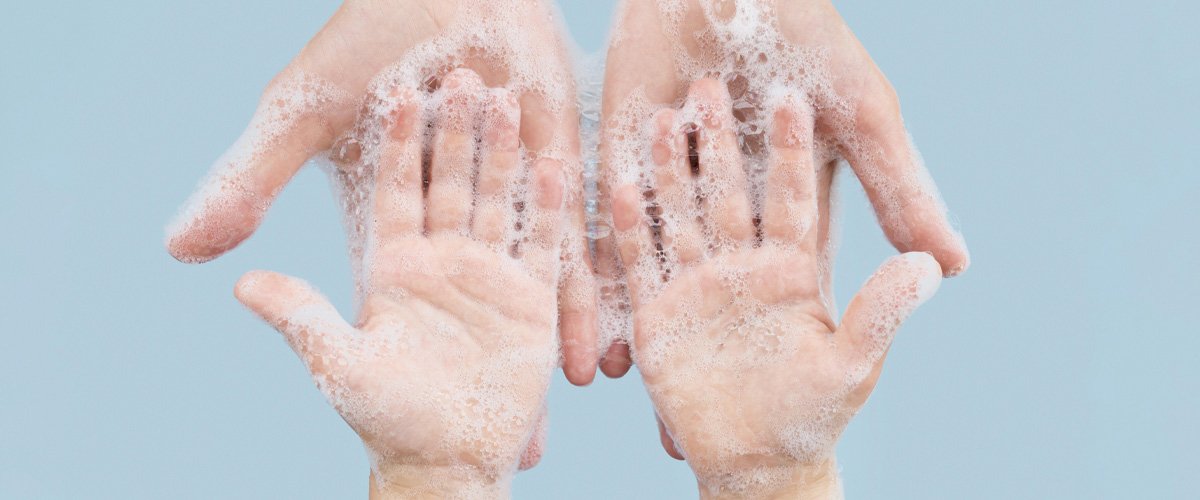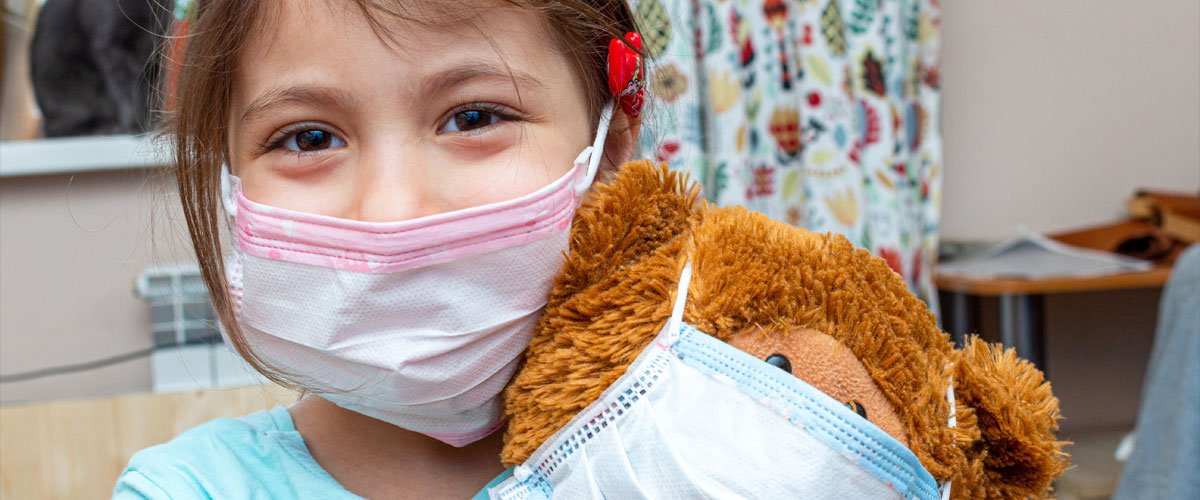How to wear a hygienic mask in children

How to care for children during COVID-19 and how to properly wear hygienic masks in children.
As the COVID-19 outbreak continues, protecting yourself and your loved ones is still important. Wearing a hygienic mask remains a preventive measure that can help reduce the spread of the virus from infected individuals, but it must be done safely and appropriately for everyone—especially young children or newborns.
For safety and proper infection prevention, parents should understand how children of different ages should wear hygienic masks and at what age it is appropriate. This knowledge is essential to properly caring for your child.
How important is wearing a hygienic mask in children?
Wearing a hygienic mask helps reduce the chances of children becoming infected through coughing or sneezing, especially when the distance is less than 2 meters. However, it’s important for parents to understand that not all children are suitable for wearing masks—especially very young children.
To ensure effective protection and maximum safety for children, it is necessary to understand at what age mask-wearing is appropriate and for what reasons.
How to wear a hygienic mask in children of each age
Data from the World Health Organization (WHO) and UNICEF indicate that children aged 6–11 years should wear a mask in high-risk situations. Children under 5 years of age are not required to wear a mask, with the following age group recommendations:
Infants up to 1 year old
Newborns and infants are indeed part of a high-risk group that requires special attention in infection prevention. However, due to differences in respiratory anatomy and mechanisms compared to adults, infants should not wear masks.
Parents should not put masks on babies, as their respiratory systems are not yet fully developed. There is a high risk of carbon dioxide buildup (hypercapnia), which can affect the baby’s nervous system. Since babies mainly breathe through their noses and are unable to compensate by mouth breathing, masks can be dangerous.
In addition, using hygienic masks made from plastic or with sharp edges can injure the baby’s face and eyes.
Recommendation: If there is a small child in the family, try to maintain a distance of at least 2 meters from others. Avoid touching, carrying, hugging, or kissing the baby. If you need to go out, use a stroller with a cover to help protect the child.
Children 1 to 2 years old
Children at this age are beginning to learn to remove their masks on their own and may start breathing through their mouths. Therefore, children in this age range may be allowed to wear masks for short periods of time under close supervision. If they feel uncomfortable, they are usually able to pull the mask off by themselves.
However, parents should still focus more on social distancing and reducing exposure.
Recommendation: Wear a hygienic mask for your child only when necessary, such as when going outside in crowded public areas.
Children over 2 years of age
Children over the age of 2 can generally wear masks. They can also remove them on their own when they feel uncomfortable. However, exceptions should be made for children with muscle weakness, neurological conditions, or respiratory problems.
Recommendation: Parents should wear masks alongside their children to set an example and help children feel that mask-wearing is normal. They should also explain the purpose of wearing a mask in simple terms so that the child understands the importance. This understanding will help children feel more comfortable wearing masks.
Children over 12 years old
Children in this age group should wear masks just like adults. They can understand information about disease, risks, and safety precautions. Educating them about the importance of wearing masks will help ensure that they wear them consistently to protect themselves and others.
Children with Chronic illnesses requiring special care
Children with certain conditions—especially neurological or severe respiratory disorders—may not be able to wear hygienic masks on their own. In such cases, parents must be very careful about the child’s environment and prioritize social distancing.
Recommendation: A blood oxygen saturation monitor (pulse oximeter) should be used to help track the child’s condition. This can be used alongside other preventive measures.
Antimicrobial guidelines in children that should be followed
Although masks are important for protection, there are other practices that can help reduce the risk of infection, with the following guidelines:

Do not take children to any risky places, except when necessary, such as going to a hospital for a basic vaccination, as prescribed by a doctor.
Try to stay clean. Wash your hands frequently with soap and water for at least 20 seconds, or alcohol at 70% or higher.
Clean toys or things that children often catch.
Train and warn not to let children lick things or take them in the mouth.
Children are advised not to come into contact with much of the outside.
Try to keep your distance from others.
What should parents do if the child refuses to wear a hygienic mask?
Wear it as a child's friend, especially at the age of 1. Most children will imitate the behavior of their parents. If you want to train your child to wear a mask, parents should put it as a good example.
Put on a doll If your child has a pair of dolls as playmates, try putting on a mask for the doll to help attract attention and get him to follow suit.
Help decorate the mask into various shapes for children to enjoy.
Compliment and give rewards. If at first the child refuses to wear should not be forced. Gradually start again. Then when the child agrees to wear a mask but well, the parent should compliment with words or give a reward to motivate them to wear it next time.
Summary
In addition to learning how to share a hygienic mask in children at each age, it is important to take good care of the children's strong hygiene, which is considered a shield against disease. Parents should give priority to the food they eat. It should always be fresh cooked and correct according to nutritional principles.




